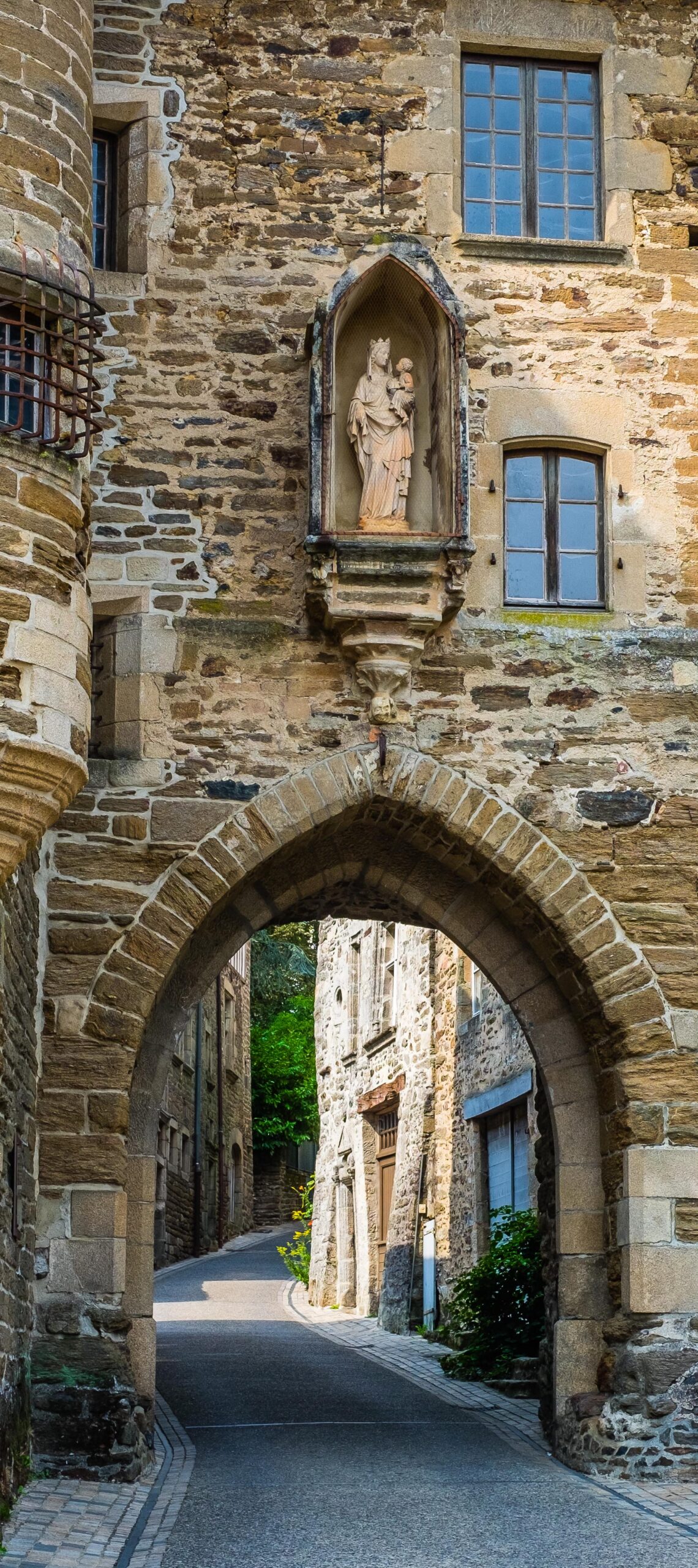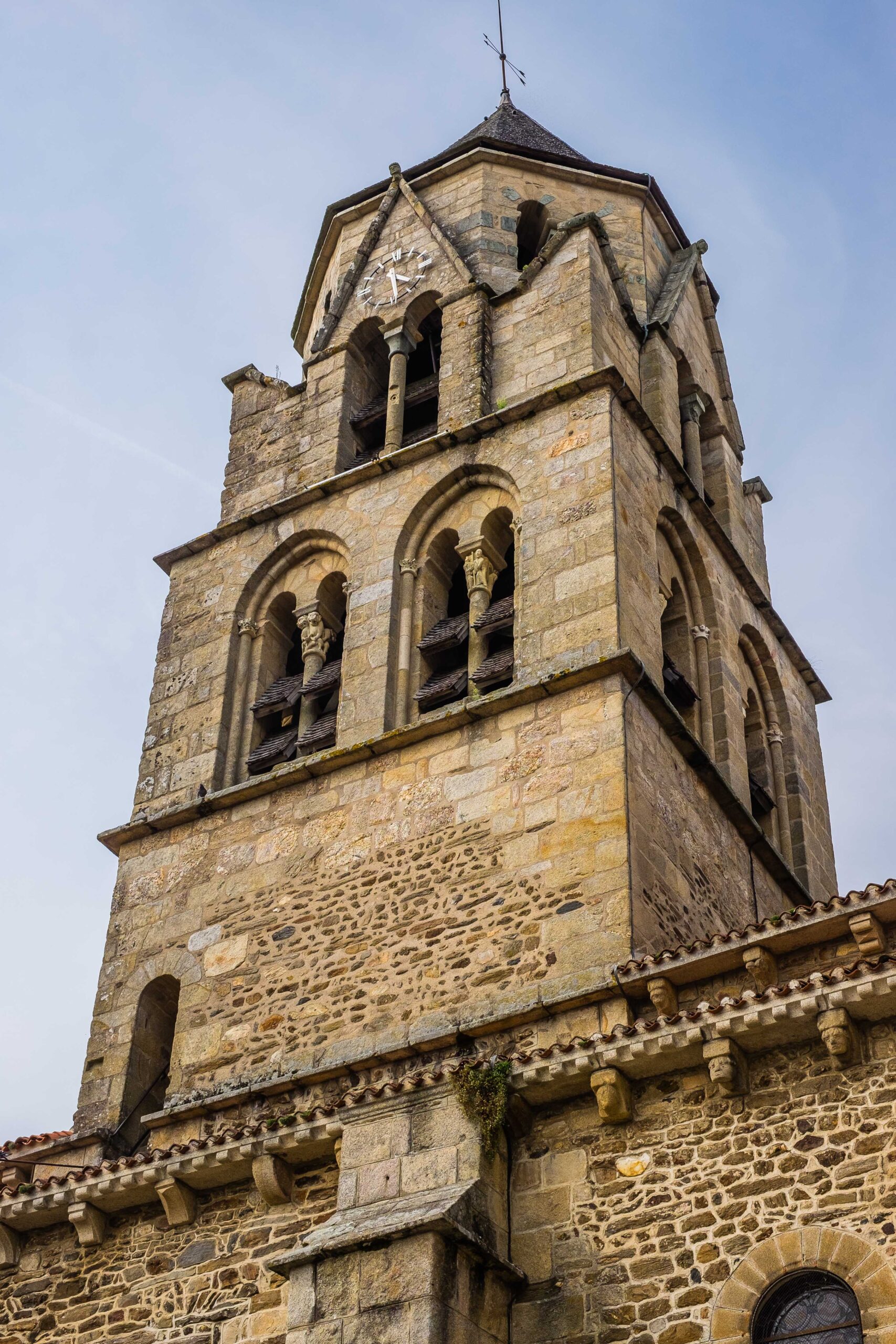When you first see Uzerche* you’ll think you’re looking at something lifted from a postcard – a striking visual of authentic medieval buildings and streets laid out like a layer cake rising up from the Vézère river. That image matches the town’s nickname, “the pearl of the Limousin”, and you’ll know instantly why it merits a place in the official list of “the most beautiful detours in France”. (And it’s not even that onerous a detour; Uzerche lies off the A20 autoroute, just 40 minutes south of the porcelain-making center of Limoges and 30 minutes north of my favorite town in the Correze, Brive-la-Gaillarde.)
*I know that not everyone can go to France right now. And with Covid-19 infections spiking again this autumn, even people already in France may not be able to travel freely. But the French government has encouraged residents to do more “local” tourism, and the numbers for the summer of 2020 do show higher levels of travel within the country. This post, then, is for anyone already in France looking for someplace “off the beaten path” for a “local” vacation – and for anyone else who holds out hope for travel like this when the world returns to a more normal situation!

Of course there’s more to Uzerche than that visual first impression. Its roots go back to the earliest recorded history of the country (and perhaps even further than that), and its spectacular location is an integral part of that history. Gaulish tribes had settled here as early as the 2nd century B.C.E. Julius Caesar’s Roman legions came in 51 B.C.E. – reputedly the last place they conquered in their march into the deep heart of France.
History at a Crossroads
In fact, Uzerche benefited for centuries from being at the crossroads of two major trading routes: Kings (both French and English) and Popes visited here frequently and recognized the strategic value of such an easily defended site and its placement along a major tributary to the Dordogne River. They established royal courts, tax bureaus, and other administrative offices here, and medieval Uzerche was so wealthy that a popular saying held that “he who has a house in Uzerche has a capital in Limousin.”

But if the spectacular sight brought blessings to the city, it also made it an easy target for all kinds of heartache and destruction. Visigoths invaded in the 6th century, the Normans raided Uzerche in 909 C.E., and English armies and the Black Plague came to town more than once during the Hundred Years’ War.

The town's coat of arms has 2 bulls - a reminder of the famous deception committed on the Saracen army. King Charles V allowed them to add the 3 lilies and gave the town the nickname "Uzerche the Virgin" because its walls were never breached during the many sieges mounted against it.
Walking through Uzerche today
With a few exceptions, most of the buildings you’ll encounter on a walk through the “upper town” of Uzerche come from that rich period from 1300 to 1700:
- The Becherie gate is the only remaining portal out of the nine that were integrated into the town’s heavy defensive walls

- Examples of the 17th-century houses testify to the wealth and status of Uzerche




- The 11th-century “Tower of the Black Prince” (but does the name refer to the son of England’s King Edward III – or to the infamous Geoffroy of the Black Head, both of whom roamed this region and wreaked havoc during the Hundred Years’ War? The answer is lost in the fog of history.)

- The Superior Primary School is much newer (opened in 1907). It was a kind of “magnet school”, attracting boarders from around the Limousin. I found the building’s signs interesting – they focus on the fact that such an imposing building right next to the town’s great Abbey church is a symbol of the French values of laïcité -- an affirmation of secularism in French culture, constructed right in the face of the church.

An abbey that holds up a mirror to the history of Uzerche

Our tour ends, appropriately enough, at the fine Romanesque Abbatiale Saint-Pierre – the Abbey Church of Saint Peter. Its story is integrally tied to all the most interesting aspects of Uzerche. It’s profoundly old (construction started in 1030 C.E., and the crypt was consecrated in 1097). It had an important role in the military defense of the city; the church was fortified and three towers were added in its walls during the 14th century as the Hundred Years War bore down on this region. Its bell tower was destroyed by lightning in 1622, and there have been restoration projects going on periodically since then.



You can see all these places in a long afternoon’s walk through Uzerche – a walk I recommend if you ever have the opportunity to make this “plus beau detour” off the A20 autoroute. While there aren’t as many restaurants, hotels, or market streets as you might find somewhere else (there are only about 2,800 residents here), Uzerche is a beautifully preserved medieval town on a spectacular site, with a history as deep as any other in the region.
Have you visited other places in France where the location was so important to a town’s history? What made the physical characteristics of the site so important? How does Uzerche compare, in your experience? Please let us know what you think in the comments section below – and please take a second to share this post with someone else who appreciates the people, history, culture, and places of the deep heart of France!
Unless otherwise noted, all images in this post are copyright © 2020 by Richard L. Alexander




